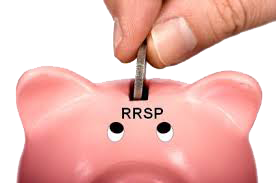-
What You Need to Know About Group RRSPs
Posted on June 14, 2016 by Richard Adler in Blog
One of the most common forms of financial plans is what’s known as a group Registered Retirement Savings Program (group RRSP). There are lots of reasons that these plans are so common, and even more reasons why they are popular. For lots of people, a group RRSP represents the best of all worlds when it comes to saving for retirement, though there are a few drawbacks that you need to keep in mind.What You Need to Know About the Basics
An individual RRSP is a retirement savings fund that you set up with your financial institution and then that you contribute money into. The terms are all specific to your account and you have a lot of control over the whole process.
A group RRSP takes that same idea of creating an account and contributing to it, but spreads risk across a wide group of people. Individuals aren’t in direct control of the management of the funds, but rather a separate account manager executes the specifics of the process for everyone who participates. Group RRSPs are created and maintained by employers, allowing the employees to join these plans.
What You Need to Know About Contributing
In a group RRSP, employees have a portion of their pay taken directly out before it reaches them, at which point it’s placed into the retirement fund. Tax savings can be applied throughout the year rather than being saved up for the end of the year. Advantage here is investing pre-tax dollars.
Though there is limited flexibility in many aspects of the group RRSP, there is a bit of latitude when it comes to the amount of money that an employee contributes. It could either be a percentage of the individual’s income, or a specific dollar amount with each payday.
One of the biggest perks of the group RRSP is the ability of employers to decide to match contributions. Though this perk has become less common over the last several decades,, it’s still a powerful incentive for employees to save and remains a compelling part of the appeal employment packages for workers, making a given workplace more competitive in hiring the best and the brightest.
It’s important to realize that there are limits to how much an individual can contribute to their group RRSP. The maximum across the board amount that anyone is legally allowed to put into all of their RRSPs (group, individual, couple and pensions) under the Income Tax Act is 18% of their income from the previous year to a maximum.
What You Need to Know About Taxation and Fees
All contributions by the employee are able to qualify for a tax deduction. Though employer contributions are also considered to be tax deductible, it’s important to note that they are considered to be taxable benefits – they’re treated in a similar way to income.
Any time an individual decides to take money out of the RRSP, that amount is taxable in that same year. These taxes are often not taken into account when people decide to take money out of their RRSP and are in addition other costs that are associated with fund withdrawal.
The good news is that with group RRSPS, fees tend to be a great deal lower than for individual or couple RRSPs thanks to the larger group of people that fees are spread around to and the greater amount of money that’s invested into the plan through the company. Over time those lower fees can really add up to some great savings.
What You Need to Know About Administration
Investment options tend to be somewhat limited with a group RRSP because they are not individualized plans. Keep in mind that these plans must accommodate the needs of a wide group of individuals who are going to invest in them. The administration of a group RRSP is generally done by a mutual fund company, a bank or an insurance company, not directly by them employer themselves. There are some self-directed group RRSP options out there which can offer more options for the individuals within them that could allow them to invest in other choices, however these are less common.
Thanks to simple regulation by the government, group RRSPs are simple and straightforward when it comes to administration. There is a good deal of flexibility that allows companies to add or withdraw employees, and in general these plans are easier to deal with than traditional pension plans. That ease of administration is a big reason that group RRSPs have become so incredibly popular in the last half century.
What You Need to Know About Withdrawing Funds
Withdrawing money from an RRSP is known as redemption. Withdrawing from the employer portion of a group RRSP sometimes is not allowed because most plans have a vesting time, average is two years from date of commencement. Should your plan have DPP (Deferred Profit Sharing Plan) these funds are locked-in till age 65. After the investments have matured is relatively simple and has low fees associated with it. However as with any retirement investment there are penalties for early withdrawal of funds.
Though it’s technically true that the employees owns all monies that are deposited into their group RRSP as soon as they are placed in the fund whether they contributed them or if they were contributed by the employer, it’s important to realize that most plans are set up to make it less appealing for individuals to withdraw that money before retirement.
Knowing the basics of the group RRSP process allows you to make smarter decisions and to determine what is right for you, and also to make the most of your investments.
Call Morgan National Corporation today for more information regarding your options for group RRSP policies, at 1-866-595-3533 or visit our Private and Group Investments Explained page to learn more about these specialty policies.





